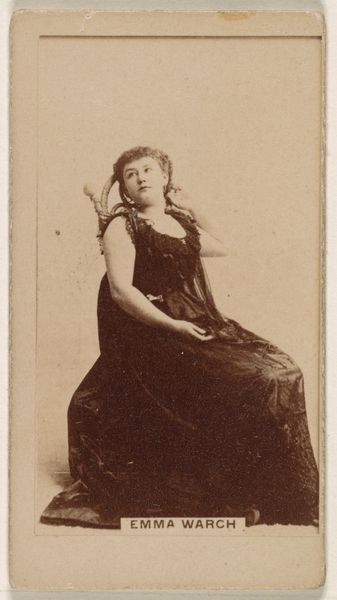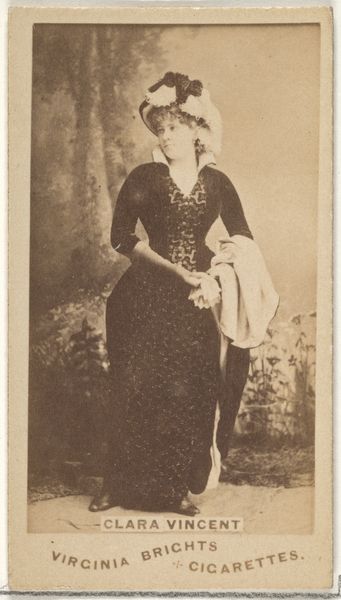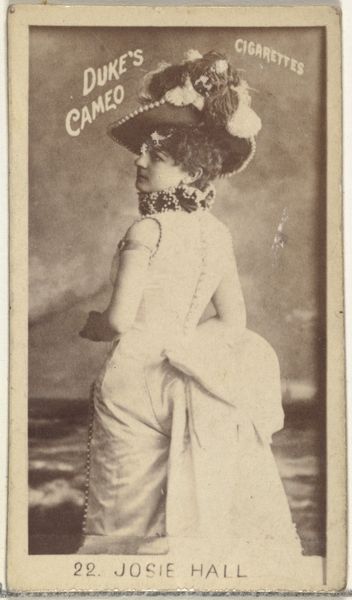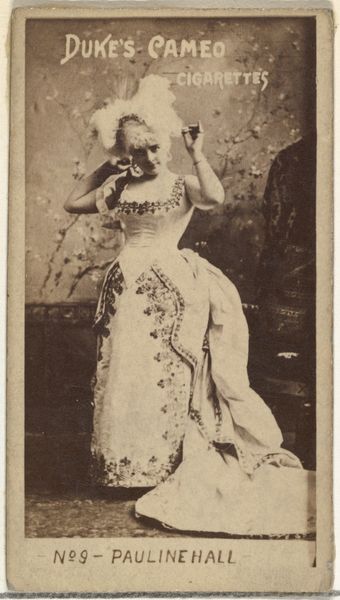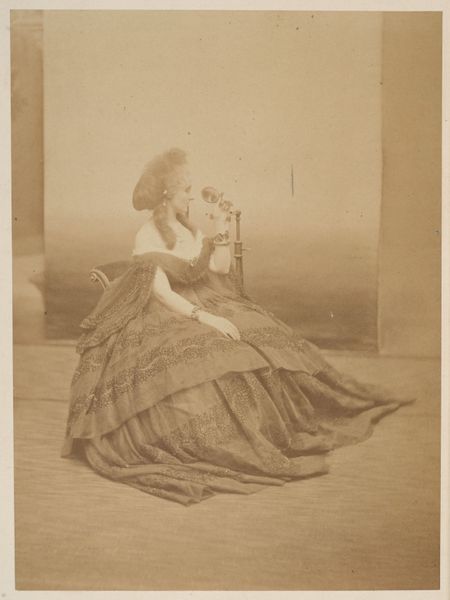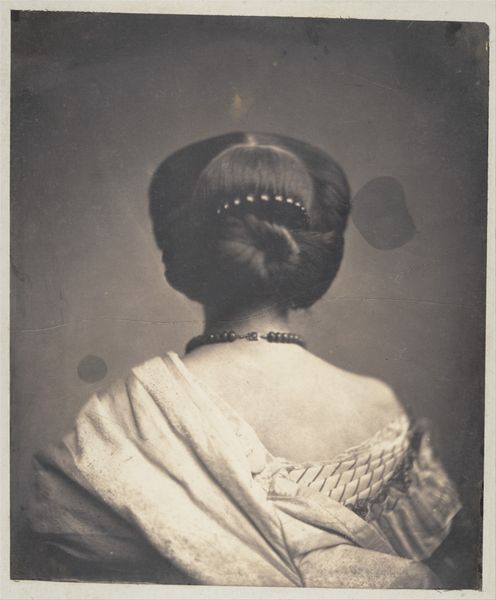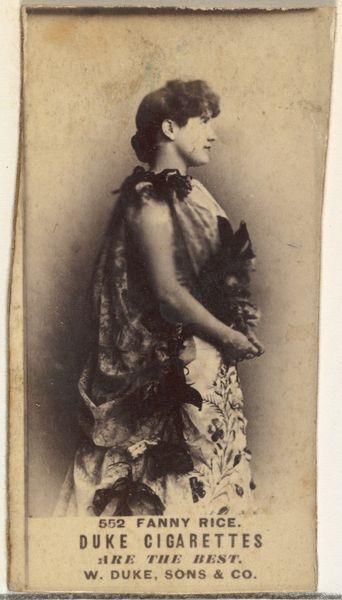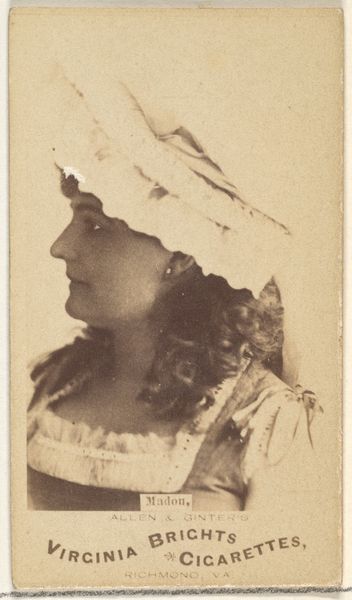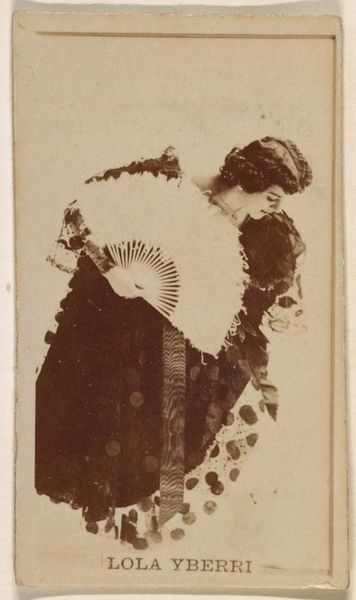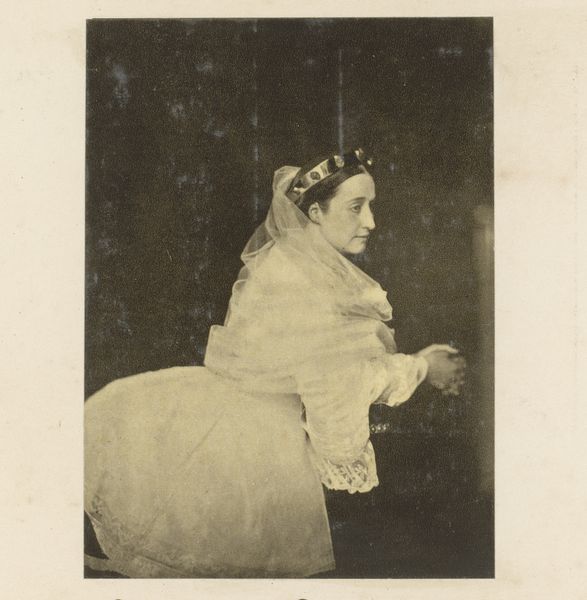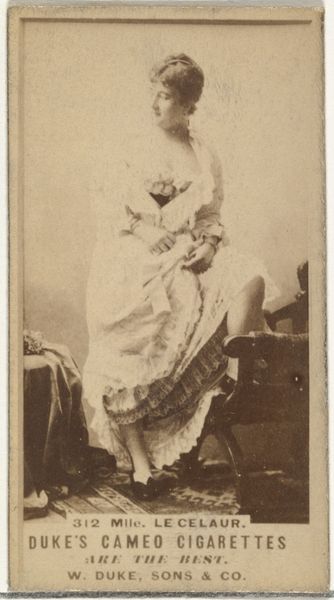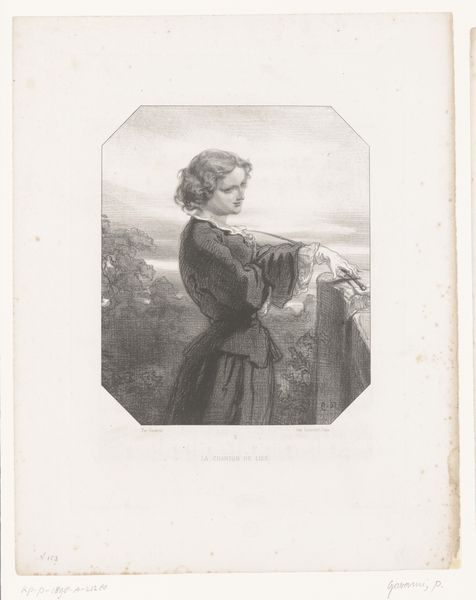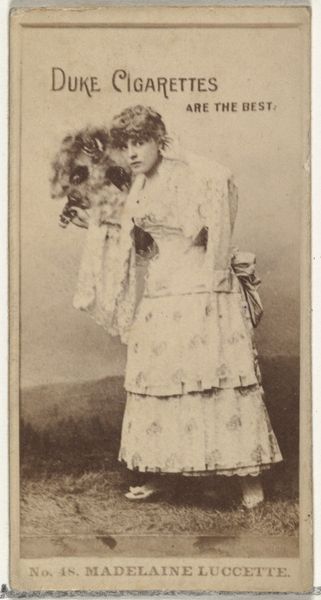
Dimensions: 11.8 x 8.9 cm (4 5/8 x 3 1/2 in.)
Copyright: Public Domain
Editor: This is Pierre-Louis Pierson’s “La fillette,” an albumen print from the 1860s. The young girl looks out of the frame, composed, but I'm immediately struck by how her ornate dress seems to swallow her whole. How do you interpret this work? Curator: It’s precisely that contrast between the child's supposed innocence and the suffocating weight of her garment that grabs me. Think about the historical context: the 1860s. What did it mean to be a girl on the cusp of womanhood during the Second Empire in France? What kinds of social performances were required of them? Editor: So the dress, as a material object, stands in for the constraints placed on women? Curator: Exactly. Consider how portraiture at the time was largely used to reinforce societal power structures, particularly gender roles. The photographic process itself demanded stillness and composure. This isn’t just a photograph; it's a carefully constructed representation of feminine virtue and status. We might consider how her gaze avoids meeting ours, almost resisting this display. Editor: That makes sense. I didn’t see the almost performative aspect of her portrait. It feels sad to see her so constrained. Curator: And is there a resistance there? Look closer, how might she be owning this presentation in some small, perhaps subversive way? Where do we see agency? What does it mean when one cannot "see" agency or power overtly? Editor: That gives me a lot to think about. It is not just a sentimental image but one charged with socio-political implications, particularly in light of our modern understanding of gender performativity. Curator: Indeed. Art invites us to question, challenge, and reimagine the world around us. This photograph, on the surface seemingly demure, asks profound questions about gender, power, and representation that still resonate today.
Comments
No comments
Be the first to comment and join the conversation on the ultimate creative platform.
